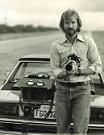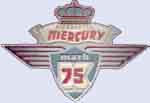
Originally Posted by
Master Oil Racing Team

It's been awhile and I may have some years wrong...I'll check. EPA may have begun in 1972 and RCRA 1976 which put more teeth and expansion in EPA.
Anyway....back to the story. At that first race in Galveston where the rotaries proved their potential, Joe Rome saw the race from a different perspective. Joe watched the race from a seagull's eye view. If any of you remember from previous posts on other threads, Joe was in a cherry picker in the pits high above Offats Bayou during the race. He wanted to be down where we were but he promised Woody Carson to go up with him. Woody was calling the race for a big name radio station covering Houston and a big part of the gulf coast and inland part of Texas. While Woody was extremely talented in what he did, Joe had a wider and deeper knowledge of a lot more of the outboard drivers than Woody did, so Joe provided the "color".
I asked Joe what he remembered about the OMC RC tunnels. The main thing he thought was that they were not pushing in the turns. They were not agressive in the apex. They just made their way through then went very fast down the straights. He mentioned several Pro races in past history that reminded him of the rotary strategy, but to me the best match is that of the Marshall Grant/Dan Kirts Konig 8 cylinder OF motor. It never ran on a boat that was specifically designed for the motor. The Konig 8 cylinder was more powerful than any boat it ran on in competition. And it had a weak link in the lower unit. That boat was tremendously fast down the straights but you had to nurse it through the turns because the power could strip the gears. To Joe, that was what it reminded him of except the rotaries came before the Konig. The idea in both cases however,was that there was not enough boat under the motor, although there was enough speed. All you had to do to win was to keep it together and not make mistakes.


 Thanks:
Thanks:  Likes:
Likes: 





 Reply With Quote
Reply With Quote




Bookmarks